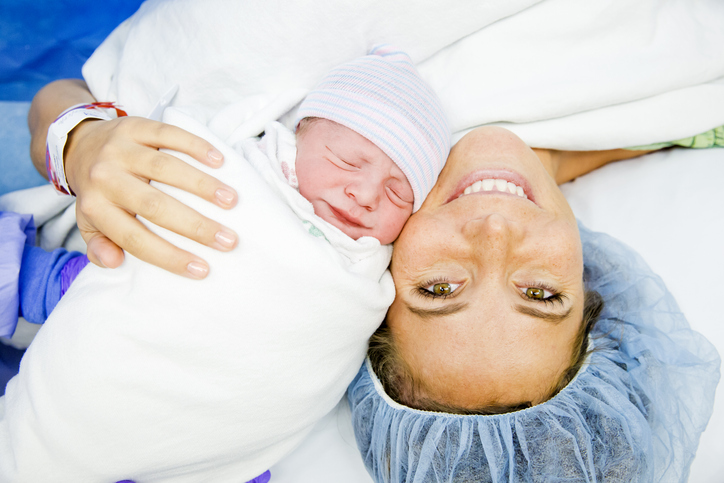With everything new that comes with pregnancy, many pregnant people experience memory issues. But is...
Read More

Each year, more than 30 percent of new mothers will give birth to babies through cesarean delivery, also known as a C-section, totaling over 1.2 million births. There are risks and benefits to the procedure, which you should discuss with your provider if you’re considering a C-section. You should also discuss your delivery options for future pregnancies after you’ve had a C-section.
A C-section is a surgical procedure in which a cut is made in the abdomen and a newborn is lifted through the opening. This option is faster than traditional vaginal birth and circumvents the process.
“Depending on the mother and baby’s health, C-sections may be a long-term part of your birth plan,” said Benjamin DiJoseph, D.O., OB/GYN at Inspira Medical Group. “But even if your birth plan includes a vaginal birth, it’s important to prepare for the unexpected. In an emergency situation, we may need to do a C-section to keep mother and baby healthy.”
Planned C-sections are considered elective procedures and are scheduled with your doctor and hospital. In many cases, mothers with a planned C-section will not even go into labor before their C-section date. A planned C-section may be part of your birth plan if you have a placental problem; if your baby is facing the wrong way or if you are pregnant with twins and one baby is in an abnormal position. If possible, your physician will avoid performing a C-section before 39 weeks in order to give your baby enough time to develop.
Sometimes, an emergency C-section is the only option for doctors who need to deliver a baby quickly if the mother or baby is in distress. Emergency C-sections are prioritized like any other emergency surgery.
C-sections are a major surgery and come with all of the associated risks. For example, bleeding and hemorrhaging are more common in mothers who receive a C-section, and there is also an increased risk of infection.
Having a C-section may also complicate future pregnancies, as the scar in your abdomen may prevent the placenta from properly attaching to the uterus or become reopened during late pregnancy and labor. Babies born via C-section are also more likely to have asthma and other breathing problems.
Yes, some mothers are able to have a C-section with their first baby and a vaginal delivery with their second child. It’s a procedure called vaginal birth after cesarean (VBAC). To be eligible for a VBAC, there must be at least eighteen months between conception and the previous cesarean.
“Trying for a VBAC lowers your risk of complications and shortens your recovery time because we’re not doing surgery,” said Dr. DiJoseph. “It’s also a way to prevent other C-section-related issues like placenta previa, where the placenta covers part of the cervix, or placenta accreta, where part of the placenta is attached to the uterus.”
Trying for a VBAC can also give mothers the opportunity to experience a vaginal delivery as part of their birth plan. However, a failed trial of labor after cesarean is associated with more complications, including, a uterine rupture, which is rare.
People interested in a VBAC should talk to their providers to see if they are eligible to try for one. Your eligibility depends on a number of factors, including your overall health, the baby’s health and how your previous deliveries went.
“If you’re interested in trying for a VBAC, we’ll do everything we can to make it happen; however, nothing is more important than the safety of you and your baby,” said Dr. DiJoseph.
Learn more about your delivery possibilities with Inspira’s online birth plan tool.

With everything new that comes with pregnancy, many pregnant people experience memory issues. But is...
Read More
New mother was concerned about a potentially serious complication, but the care team at Inspira...
Read More
Midwives have a vital role in ensuring safe, empowered childbirth experiences. Midwives provide care...
Read More
The material set forth in this site in no way seeks to diagnose or treat illness or to serve as a substitute for professional medical care. Please speak with your health care provider if you have a health concern or if you are considering adopting any exercise program or dietary guidelines. For permission to reprint any portion of this website or to be removed from a notification list, please contact us at (856) 537-6772